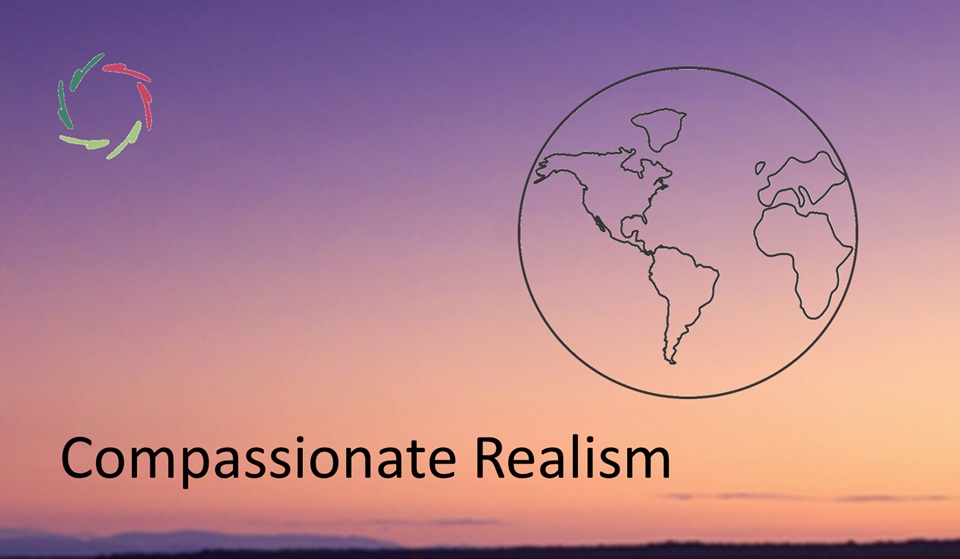The Economic Cost of Societal Inner Dissociation

When the inner alignment between individual values and societal structures is fractured, it manifests in economic inefficiencies, deepens inequality, and creates instability in markets and institutions.
The present blog analyzes how SID contributes to these economic challenges and explores ways to create more sustainable and equitable economic systems. This blog is part of the *SID* series. Please read the primary blog of this series for a basic understanding of Societal Inner Dissociation (SID).
Economic inefficiencies caused by SID
In a society affected by SID, economic incentives often become misaligned with the greater good. For example, corporations may prioritize short-term profits over long-term sustainability, leading to practices that deplete natural resources, exploit workers, and harm communities. These misaligned incentives create a cycle of inefficiency, where resources are wasted on activities that ultimately undermine societal well-being rather than contributing to it.
SID also leads to the misallocation and waste of resources on a broad scale. When fragmented interests drive decisions – whether at the individual, corporate, or governmental level – resources are often diverted into areas that do not serve the broader societal need. This can include everything from the overproduction of consumer goods that feed a cycle of consumption and waste, to investments in industries that harm the environment or public health, all while neglecting essential services like education, healthcare, and infrastructure.
The inefficiencies caused by SID can also be seen in the loss of productivity within the workforce. Employees who are disengaged, disconnected from their work, or driven by external pressures rather than intrinsic motivation are less productive and more likely to experience burnout. This loss of productivity not only affects individual companies but also the economy as a whole, reducing overall economic growth and resilience.
Inequality and SID
In societies affected by SID, the gap between the rich and the poor tends to widen. This is often driven by policies and economic systems that favor the accumulation of wealth at the top while neglecting the needs of those at the bottom. As the wealthy become more disconnected from the rest of society, their influence over economic and political systems grows, leading to policies that perpetuate inequality rather than addressing it.
Economic inequality fueled by SID has profound effects on social cohesion. When large segments of the population feel excluded from economic prosperity, resentment and distrust grow. This can lead to social unrest, political polarization, and a breakdown in the social contract. Inequality also diminishes opportunities for upward mobility, trapping individuals and communities in cycles of poverty and marginalization, which further entrenches SID and weakens societal stability.
The economic cost of inequality is significant. Societies with high levels of inequality tend to experience lower levels of overall economic growth, higher rates of crime, and increased health problems. These issues create additional burdens on public services and reduce the quality of life for everyone.
Market instability
Market instability is often characterized by boom-and-bust cycles, where periods of rapid economic growth are followed by sudden downturns. SID exacerbates these cycles by encouraging speculative behavior and short-term thinking. When individuals and institutions are disconnected from deeper values and long-term perspectives, they are more likely to engage in risky financial practices, such as excessive borrowing or speculative investments, that create unsustainable bubbles.
The financial crises that have rocked global markets in recent decades can also be traced back to the effects of SID. In a dissociated society, financial institutions may prioritize profit over prudence, engaging in practices that are not aligned with the long-term health of the economy. This was evident in the 2008 financial crisis, where the pursuit of short-term gains through risky mortgage lending led to a global economic collapse. Such crises reflect deeper societal fractures that need to be addressed to prevent future instability.
Market instability fueled by SID also leads to a loss of trust in financial institutions and markets. When people perceive that the economic system is rigged in favor of a select few or that it operates without regard for the common good, confidence in markets erodes.
Building a sustainable economy
One of the first steps in building a sustainable economy is to realign incentives so that they support the common good rather than short-term profits. This could involve implementing policies that encourage sustainable business practices, such as tax incentives for companies that invest in renewable energy, fair labor practices, and community development.
Addressing economic inequality is crucial for building a more stable and prosperous society. Reducing inequality not only improves social cohesion but also strengthens the economy by ensuring that all members of society can contribute to and benefit from economic growth.
To counteract the short-termism driven by SID, it is important to promote long-term thinking in both economic policy and business practices. This could involve encouraging investments in infrastructure, education, and technology that will yield benefits over decades rather than focusing solely on quarterly profits. Long-term thinking also requires a shift in cultural values, where success is measured not just by immediate gains but by the lasting impact of economic decisions on society and the environment. Last but not least, by creating a more robust regulatory framework, we can reduce the likelihood of financial crises and build a more resilient economy.
In short
The economic costs of SID are significant, leading to inefficiencies, deepening inequality, and creating instability in markets and institutions. To build a more sustainable and equitable economy, it is essential to address the underlying SID. By aligning incentives with the common good, reducing inequality, promoting long-term thinking, and strengthening financial regulation, we can create an economy that supports integration and long-term prosperity for all.
Lisa is ready for all personal coaching ― of course, without manipulating anyone.


